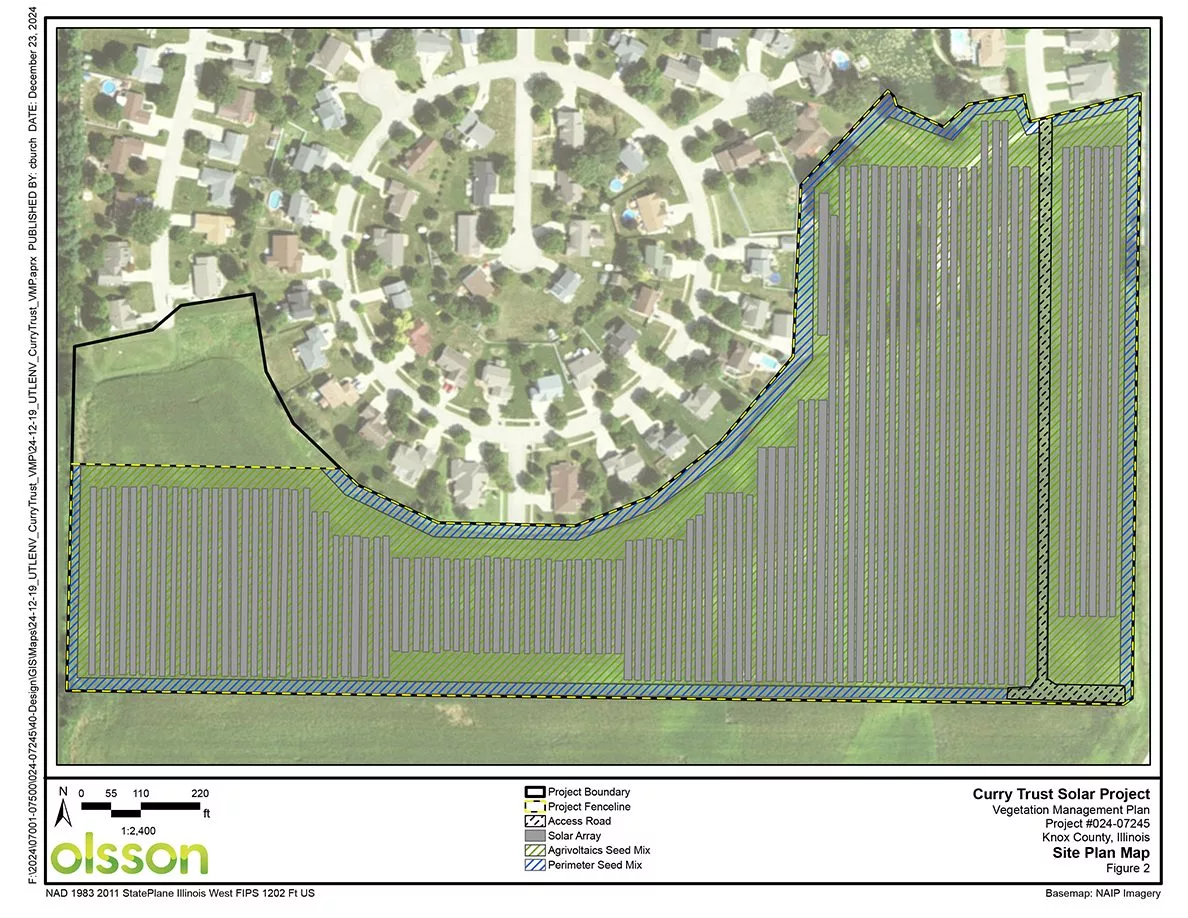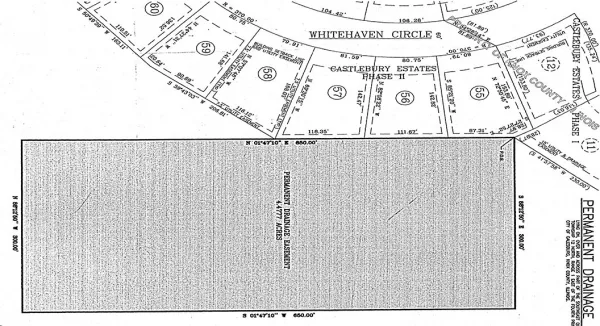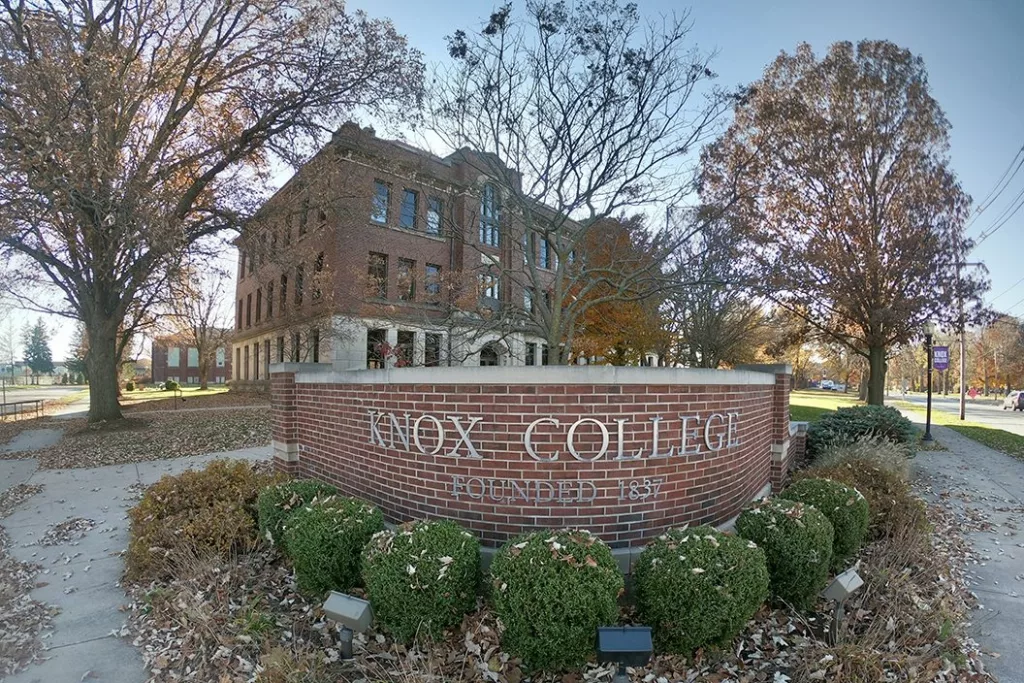
The city’s Community Development Department is requiring the developer of a proposed solar project on Galesburg’s far northwest side to submit a new site plan. contending they failed to show two recorded permanent drainage easements on its original layout.
The Curry Trust Solar Project is proposing a community solar development with an agrivoltaics component at 3146 Dover Lane, located behind the former Shopko retail center and near the Castlebury Estates residential subdivision on South Lake Storey Road. Specifically, 60 sheep would graze in a rotation of 10 paddocks every four days to keep the vegetation below the solar arrays.
Chase Bradley of UGE International, speaking on behalf of the project, tells WGIL, “It’s not necessarily a road block—it’s just more one hoop to jump through.”
City: Developer must address permanent drainage easements
A letter dated March 18, 2025, from the city’s Community Development Department to Bradley, and obtained by WGIL via a Freedom of Information Act request, says:
The site plan submitted for review by the Development Review Committee was missing some vital information. As such, the previous review is not valid, and a new site plan will need to be submitted for consideration. Please see the comments below:
There are two recorded Permanent Drainage Easements that were not shown on your site plan. These easements are recorded as Documents #843324 and #843325.
- The above-mentioned easements were required when City Council approved Castlebury Estates Subdivision, which is recorded as Document #843323.
- Under City Ordinance 152.352 (B) (1) (b) Drainage easements shall be kept clear of all permanent and temporary structures, trees, bushes and other vegetation.
Steve Gugliotta, director of Community Development, said the easements were established to manage stormwater flow and ensure proper drainage for the Phase II Subdivision at Castlebury Estates. The residential homes for Phase II were subsequently constructed.
The east permanent drainage easement, which is where developers originally planned to place the solar project, is nearly 4.5 acres in size, or 300 feet wide by 650 feet deep.
Permanent Drainage Easement by WGIL Radio on Scribd
Gugliotta said by ordinance, permanent drainage easements must be kept clear of all permanent and temporary structures. Any developer who proposes to construct buildings or structures over those easements would need to submit a written request asking for, and reason why, the City Council should consider vacating the permanent drainage easements. The other option would be to design a layout whereby no buildings or structures are on top of the permanent drainage easements.
Bradley said it’s their belief that the remaining drainage easements do not serve a purpose.
“We raised this issue and wanted to get the drainage easement vacated two years ago, and we were told by the city that we did not have to,” Bradley said. “And now, two years years later, after we’ve spent time and money, they’re telling us that we now have to. They haven’t been able to explain where the discrepancy comes from.
“We’re still in the process of sorting it out, because we’re being held to a different standard than what we were told in writing back in December of 2023.”
Developer: ‘We are trying to be good neighbors’
Residents of the Castlebury neighborhood have voiced strong opposition to use of sheep for vegetational maintenance at the proposed solar development. Concerns raised by the residents range from the smell and potential diseases and health issues caused by the sheep, to the permanent loss of land they say was originally zoned for residential expansion.
“We understood there would be concerns,” Bradley said. “There are supporters for this project, including some who reside within Castlebury Estates. But obviously there are people who do not advocate for this project in Castlebury Estates.
“We are trying to be good neighbors. We’re trying to do agrivoltaics instead of lawn mowers, and that’s good for the environment.”
Bradley acknowledged there would be less sheep than originally proposed since they dropped a request to waive a requirement that livestock should be not less than 100 feet to an adjoining property line.
Utilizing agrivoltaics is one of the requirements for the project to be developed, according to Bradley, through their application to Illinois Shines.
“There are plenty of projects like this all across Illinois and the Midwest,” Bradley said.
Ask to address the residents’ concern of the smell they say would come from having sheep near their homes, Bradley said, “We have an agrivoltaics consultant, because we’re part of the American Solar Grazing Association. And we have one of the founders working as a consultant to help us implement agrivoltaics across the operating portfolio.
“I would love to find a formal setting to hold discussions and address any concerns from the residents.”
Bradley also noted the project is a community solar project that would generate electricity it plans to sell back to local subscribers. He said residents of the Castlebury neighborhood would have first choice to get discounted energy rates of between 10 and 15% of average.
The project still has many hurdles to clear before, or if, construction would begin, according to Bradley.
“The project has not yet been reviewed for interconnection by the utility, so they could say it will cost $5 million to plug this in, and that could totally kill the project,“ he said. “So, we’re not there yet.
“Nobody will see anything as far as development for the foreseeable future—at least for the next 18 months. We’re really still in the planning phases, and have been since 2023.”



